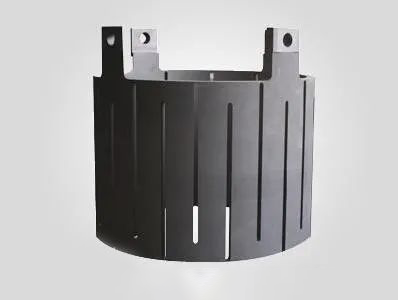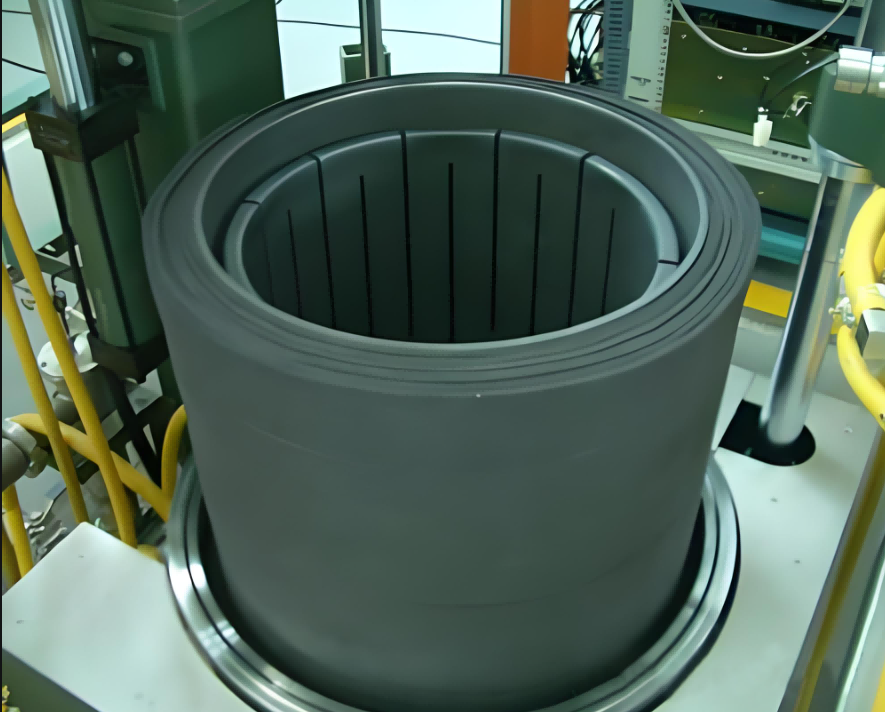The thermal system of the vertical single crystal furnace is also called the thermal field. The function of the graphite thermal field system refers to the entire system for melting silicon materials and keeping the single crystal growth at a certain temperature. Simply put, it is a complete graphite heating system for pulling single crystal silicon.
The graphite thermal field generally includes (graphite material) pressure ring, insulation cover, upper, middle and lower insulation cover, graphite crucible (three-petal crucible), crucible support rod, crucible tray, electrode, heater, guide tube, graphite bolt, and in order to prevent silicon leakage, the furnace bottom, metal electrode, support rod, are all equipped with protective plates and protective covers.
There are several main reasons for using graphite electrodes in the thermal field:
Excellent conductivity
Graphite has good electrical conductivity and can efficiently conduct current in the thermal field. When the thermal field is working, a strong current needs to be introduced through the electrode to generate heat. The graphite electrode can ensure that the current passes stably, reduce energy loss, and make the thermal field heat up quickly and reach the required working temperature. You can imagine that, just like using high-quality wires in a circuit, graphite electrodes can provide an unobstructed current channel for the thermal field to ensure the normal operation of the thermal field.
High temperature resistance
The thermal field usually works in a high temperature environment, and the graphite electrode can withstand extremely high temperatures. The melting point of graphite is very high, generally above 3000℃, which enables it to maintain a stable structure and performance in a high-temperature thermal field, and will not soften, deform or melt due to high temperature. Even under long-term high-temperature working conditions, the graphite electrode can function reliably and provide continuous heating for the thermal field.
Chemical stability
Graphite has good chemical stability at high temperatures and is not easy to react chemically with other substances in the thermal field. In the thermal field, there may be various gases, molten metals or other chemicals, and the graphite electrode can resist the erosion of these substances and maintain its own integrity and performance. This chemical stability ensures the long-term use of graphite electrodes in the thermal field and reduces the damage and replacement frequency of electrodes caused by chemical reactions.
Mechanical strength
Graphite electrodes have a certain mechanical strength and can withstand various stresses in the thermal field. During the installation, use and maintenance of the thermal field, the electrodes may be subjected to external forces, such as clamping force during installation, stress caused by thermal expansion, etc. The mechanical strength of the graphite electrode enables it to remain stable under these stresses and is not easy to break or damage.
Cost-effectiveness
From a cost perspective, graphite electrodes are relatively economical. Graphite is an abundant natural resource with relatively low mining and processing costs. At the same time, graphite electrodes have a long service life and reliable performance, reducing the cost of frequent electrode replacement. Therefore, the use of graphite electrodes in thermal fields can reduce production costs while ensuring performance.
Post time: Sep-23-2024


